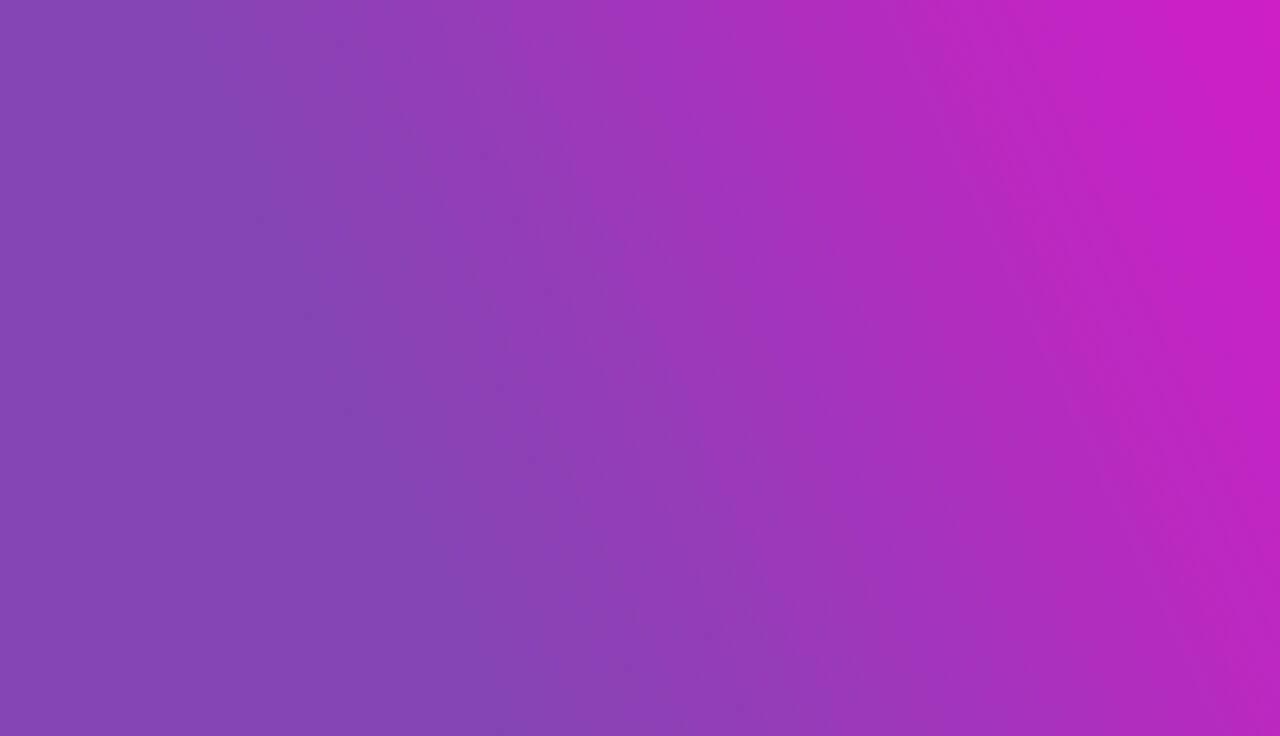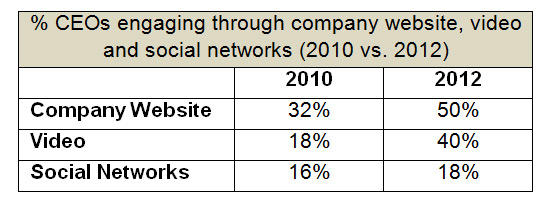Sociability of World’s Largest Company CEOs Has Nearly Doubled — from 36% in 2010 to 66% in 2012, According to New Weber Shandwick Study
NEW YORK, January 15, 2013 – In a new study released today, global public relations firm Weber Shandwick found that the online sociability of the world’s largest company CEOs rose dramatically over the past two years. In 2012, 66 percent of CEOs of the world’s top 50 companies engaged online compared to 36 percent in 2010 when Weber Shandwick first conducted one of the earliest analyses of CEO social engagement, Socializing Your CEO: From (Un)Social to Social.

“Traditionally, CEOs have built reputations through means other than social media,” said Leslie Gaines-Ross, Weber Shandwick’s chief reputation strategist. “However, this year’s CEO sociability audit provides evidence that chief executives are decidedly testing the social waters. By increasing their communications online, CEOs are showing they are listening to customers, are curious how their products are being received, care about attracting the best talent, understand the need to better humanize themselves and are more in-tune with where their stakeholders are.”

CEO Sociability starts at Home
The two-year growth spurt from 2010 to 2012 that we found in CEO sociability comes directly from CEOs’ heightened visibility on their company websites (32 percent to 50 percent) and on video (18 percent to 40 percent). The 50 percent of CEOs who are visible on their company websites most often appear on their company homepages and About Us pages (e.g., letters, pictures or video) and have a greater presence than just the executive’s name. Using the company website to add context about the CEO is a first step in socializing the CEO and is the pinnacle of sociability in some global markets.
Video is the Social CEO Hotspot
More than ever before, CEOs are using video to promote their company narratives and connect. An underutilized tool in 2010, video was used by only 18 percent of CEOs. Today, the rate of video usage has more than doubled, with 40 percent of CEOs now appearing in corporate videos. Growth in video is nearly evenly divided between CEOs appearing in videos on company websites and on corporate YouTube channels. Video can be repackaged on corporate news blogs or website pages, enabling the company to gain additional leverage from existing assets.
Social Networking Growth is Flat
Despite the large gains in CEO sociability on company websites and in video usage since 2010, CEOs have barely budged in their use of social networks (from 16 percent in 2010 to 18 percent in 2012). Chris Perry, president of Weber Shandwick’s Digital practice, commented, “The slow growth in CEO usage of social networks demonstrates that either CEOs are worried about taking a risk or are unsure about the return-on-investment by going online. We should recognize, however, that they may be more comfortable now just being social listeners, social observers and big data gatherers rather than social engagers. That said, our findings suggest an increasing percentage of CEOs now understand social media is also an essential avenue for corporate communications.”

Level of CEO Sociability Varies by Region – U.S. CEOs Lead Global Peers
U.S. CEOs surpass those headquartered in Europe and APAC in sociability, although Europeans demonstrate the greatest increase in online engagement between 2010 and 2012 (from 12 percent to 67 percent). CEOs in APAC are less social in 2012 than they were in 2010, and are also less social than those in the U.S. and Europe. U.S. CEOs are the most likely to be on social networks (40 percent) while European CEOs are the most likely to be on YouTube (38 percent). No CEOs in our study from either APAC or Latin America have social network accounts.
Fake Social Network Profiles on the Rise
A startling issue that surfaced more frequently this year compared to 2010 is the abundance of fake social network accounts. Approximately one-third of top CEOs had their names attached to fake social media accounts. Weber Shandwick found accounts that contained inaccurate or false information about CEOs or companies, and in some cases, multiple accounts all claiming to be the same CEO. This does not mean they did not have a verifiable social media account but they often had several bogus ones set up in their names.
Guide to Social CEO Engagement
Weber Shandwick recommends that companies and their executives adopt several social strategies to optimize their online storytelling, engage with customers and attract the best talent. As the world increasingly becomes more connected, CEOs must embrace technology and use it to navigate the seas of change coming their way as digital, social and mobile rapidly converge.
- Develop a social strategy and take the conversation online. CEOs are part of the online conversation whether they choose to engage or not. They do not have to go all-out socially, but having some social presence is beneficial. A truly effective social strategy would fully integrate social into its executive corporate communications processes.
- Start small. Quality of engagement is more important than quantity of social accounts. CEOs might simply start with a LinkedIn page, private Twitter or Facebook page.
- Give the company a human face. Something as simple as a picture makes the CEO a more familiar, human figure and a CEO message on the homepage has the potential to spread executive communications to a wider audience. Remember that CEO sociability it is more about enhancing CEO credibility than celebrity.
- Encourage CEO social listening. CEOs should be encouraged to use social media by listening, watching and gathering business intelligence. Social media is an excellent way to gain confidence and real time data on customers, competitors, the industry and other stakeholders.
- Continue to take advantage of video. Video offers CEOs a big leap forward in getting social. Video humanizes executives and unlike most traditional communications, allows CEOs to show emotion. Repurposing CEO communications is ideal for video.
- Monitor your CEO’s Wikipedia page. CEOs are more widely represented on Wikipedia than any other platform, although we did not include it as a measure of sociability. CEOs and communications teams should be at least aware of what is being said and if there is misleading or incorrect information, follow the strict guidelines for requesting content changes from Wikipedia editors.
- Phony CEO social network profiles are abundant – be vigilant. It’s not always easy to tell the real from the fake social network profiles. Be on the lookout.
For more detailed information, please view our infographic and executive summary.